Once Upon A Time In Hollywood: The Essential Period Piece
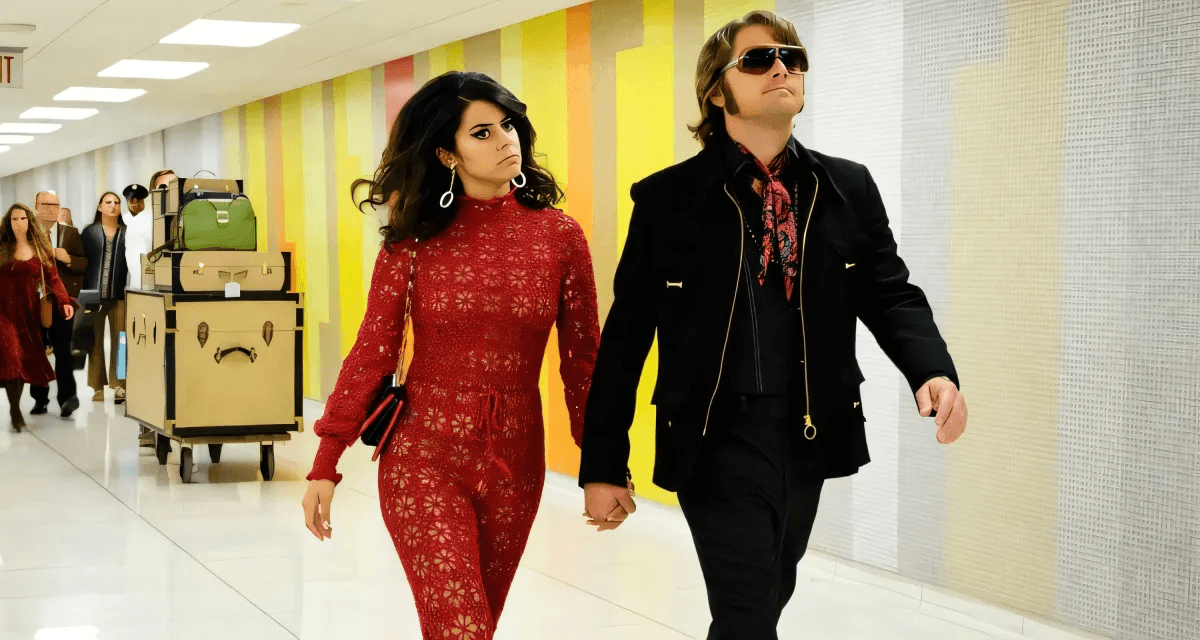
While we did a thorough review on period pieces recently, there was one that really deserves its own article. Quentin Tarantino's 9th film, Once Upon a Time in Hollywood brings us into the Hollywood of the 1960s, full of glamour and miniskirts, as well as the dark underbelly of the city while the brutal Manson murders lurk on the horizon.
Once Upon a Time in Hollywood is a 2019 comedy-drama film directed by Quentin Tarantino. Starring Leonardo DiCaprio, Brad Pitt and Margot Robbie, It takes place in the Hollywood of 1969 and features characters and plot points surrounding the infamous Tate murders.
On one hand, Once Upon a Time in Hollywood is a gaudy, glorious love letter to Hollywood. For a man who made his fame and his millions in this town as well as on its chief export, it is understandable that the time before the Manson murders were some of the best in Hollywood's history.
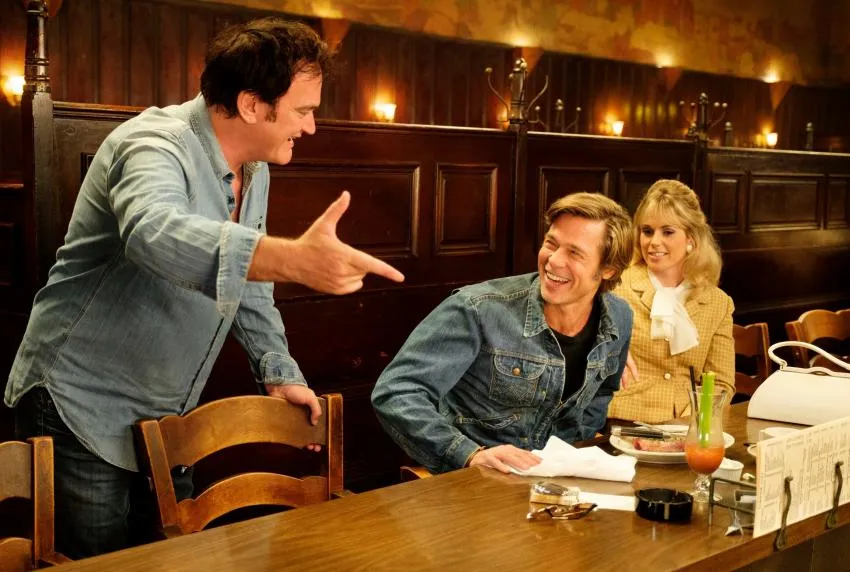
The Bright Side of Hollywood in the 1960s
This film has it all: picturesque sets and on-site locations all restored to their 1960s glory, classic cars buffed to a shine, miniskirts, go-go dancing, a party at Playboy Mansion, a flight on Pan-Am's luxurious international leg, an inside look at a day in the life of both an actor and a stuntman, as well as a historically accurate portrayal of blonde bombshell Sharon Tate's last day on this earth.
However, this portrayal is only accurate up to a point; Tarantino chooses to subvert the viewer's expectations and allow our main characters to take their vengeance on those pesky Manson kids for ruining classical Hollywood. It feels good. It is the gratuitous violence that the director is known for, but it is also his attempt to paint a new picture of what could have been the continuation of the Golden Age of Hollywood.
And who can blame him? Hollywood offers the ultimate dream: a chance to be famous and loved for what you do. In a country that specializes in tales of rags to riches stories and the American Dream, this city is perhaps the hyperbolic epitome of that idea.
As such, in the recently released novelization of the film, released on June 29th, 2021, we are given insight into what happened after the film's violent climax. Rick Dalton's exploits against the hippies strike a chord with many a Hollywood executive and he finds success in the film industry as he reemerges as a famous resident of the town. He finds film roles and continued success, and all he had to do was change history itself to make it happen.
Not since Mad Men have we seen such a detailed and gorgeous depiction of the grooviest decade in history. Tarantino loves this town and he misses his childhood. You can feel it everywhere, you can hear it in the soundtrack of his youth, you can see it as you ride along with Cliff Booth on the trip to Van Nuys Drive-In. The wardrobe is fantastic, and the massive budget of the film allows what may possibly be the most beautiful and historically accurate depiction of Hollywood in the 1960s ever committed to film.
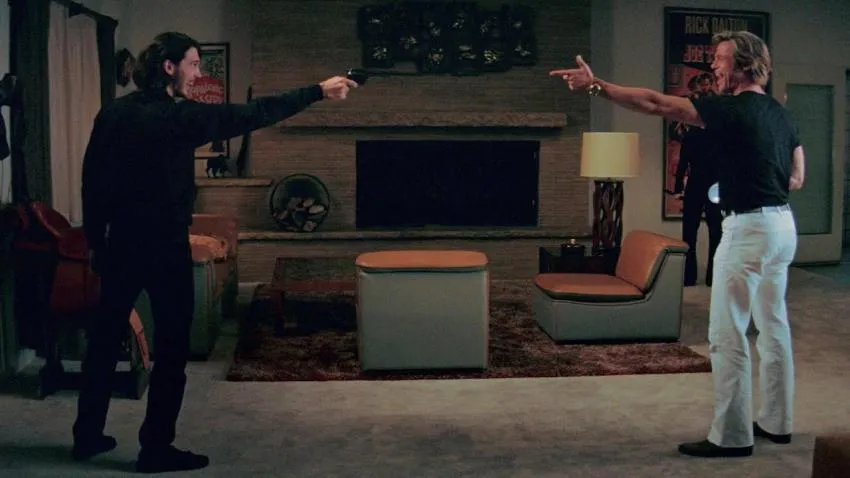
The Dark Underbelly of Hollywood
On the other hand, Tarantino has always had a penchant for subverting expectations in his films by righting the wrongs of history through historical revisionism and revenge. His 2009 effort, Inglorious Basterds, the first project he worked on with Pitt, gives us an alternate history take in which Hitler is murdered by the Jewish recruits of an American guerrilla force. In Django Unchained, just three short years later, we are treated to another revanchist fantasy in which Django takes on his captors and dispatches them with brutal efficiency.
As these are all feel-good moments to correct the evils of history, one could only imagine what a film buff like Quentin Tarantino would do if he could rewrite the past which ended the Golden Age of Hollywood. Indeed, it is the Tate-Labianca murders that rendered the city impotent in the wake of the tragedy at the height of the hippie and counterculture era. As Joan Didion said in her acclaimed essay on the 1960s, The White Album, "Many people I know in Los Angeles believe that the Sixties ended abruptly on August 9, 1969."
For a man who was just six when the murders occurred, though he was a film fan then and a Los Angeles resident as well, he longs to avenge those terrible deeds and bring back the glory of Hollywood. This isn't so surprising considering Tarantino has always been a lush for the fonder memories of moviemaking. What is perhaps an interesting parallel to draw here, is the darkness in which Hollywood holds in our modern times. There are indeed certain similarities that the #MeToo movement shares with those dark days in 1969.
After all, it was one of Tarantino's principal financiers and the man he would later call his "[messed-up] father-figure" who would be the spark that ignited the movement to end sexism and misogyny in the hallowed grounds of movie-land. Of course, we are referring to the despicable Harvey Weinstein. In fact, Once Upon a Time in Hollywood is Tarantino's first film not to feature involvement from the disgraced producer.
With this in mind, one can't help but wonder if Tarantino's attempt to right the wrongs of Hollywood's past can't also refer to his relationship with the perpetrator of the biggest scandal in Hollywood history. Tarantino choosing to go back to the 1960s, and what many have referred to as "the crime of the century" in the Manson killings, may have been more fitting than we realized.
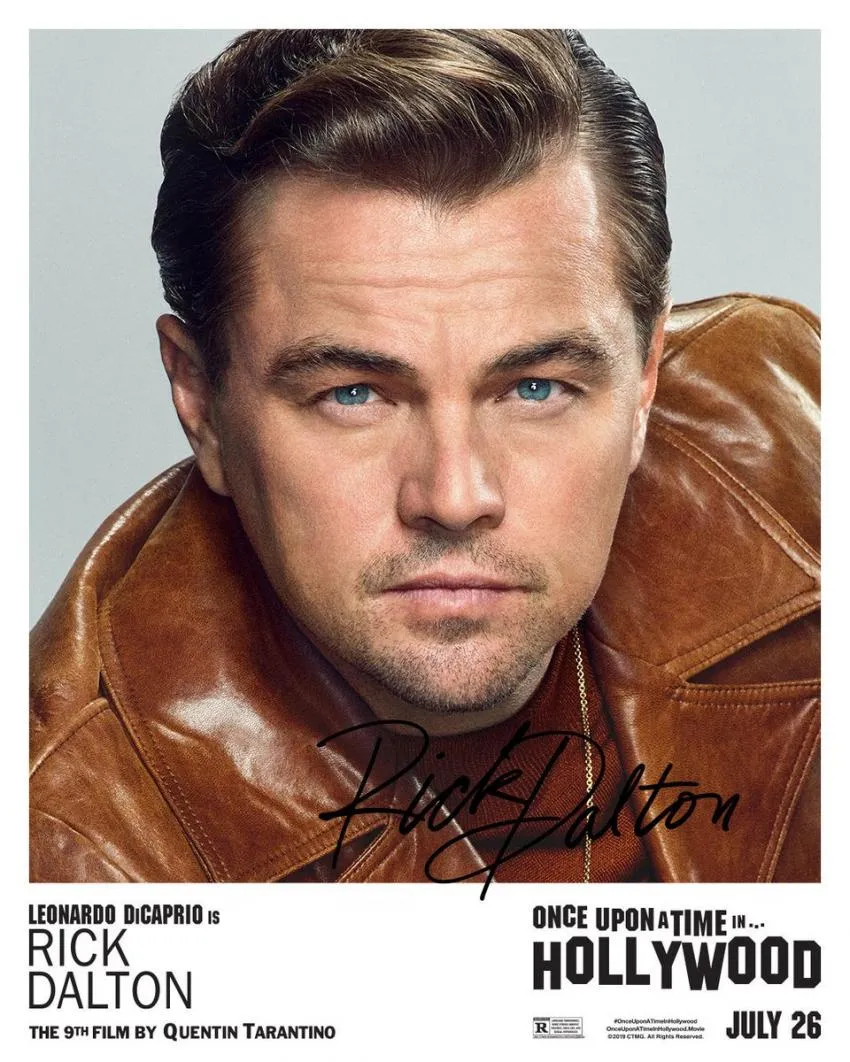
Leonardo DiCaprio As Rick Dalton
Leonardo DiCaprio is an actor who spent many years chasing an Academy Award until his eventual triumph with 2015's The Revenant. With that in mind, the character he plays in this movie, over-the-hill actor Rick Dalton is particularly fitting. There are many parallels between DiCaprio and Dalton which allow the modern leading man to play the 1960s actor with deft realism.
Although DiCaprio himself is aware of Dalton's basis on many actors of the day, including Ralph Meeker and Ty Hardin, he brought to life many of the feelings he has experienced himself as a Hollywood leading man. Leo, who himself has worked with Tarantino on the acclaimed 2012 film Django Unchained, brought his A-game to the set and even was able to slip some of his own influence on Quentin's strict ideas for the film.
Indeed, one of the best scenes in the film, in which Dalton flubs his lines for the Lancer pilot, was actually a DiCaprio brainchild. When Leo suggested this, Tarantino was irritated that it would take away from the "western inside the movie". However, after some consideration, the director came to an agreement with the star. Of the incident, Tarantino had this to say: "Fine. I’ll write a version, and we’ll do the ‘Lancer’ scene straight, and with the [mistake], knowing that in the editing room I was going to do what I wanted to."
Since this scene led to another darkly comedic one directly after, which Tarantino refers to as Dalton's "Travis Bickle sequence", he may have had the wrong instinct regarding DiCaprio's suggestion. Of course, the scene in question is the one in which Rick trashes his dressing room and curses himself out in the mirror, threatening to kill himself if he fails again.
This is perhaps one of the aspects of Dalton that has been touched on more recently, given the release of the novelization of the film, written by Quentin Tarantino himself. The book, also titled Once Upon a Time in Hollywood was released by the director as a paperback and provides some backstory to Rick's rage, going as far as to diagnose the aging actor with untreated bipolar disorder.
It is this tie to the modern world of mental health awareness that is just one of the many tangible parallels between Dalton's world and ours. It is moments like this that allow the audience to feel empathy for the character who is stuck in a time in which he is not free to discuss mental health, let alone seek out treatment for it. This would be hard for any celebrity, especially given the rise of paparazzi harassment that we know so well today.
Although DiCaprio was nominated for Best Lead Actor for his work on this film, he ultimately lost out to Joaquin Phoenix's immensely popular Joker performance, which came with a ready-made fanbase. Still, the movie was not without its accolades.
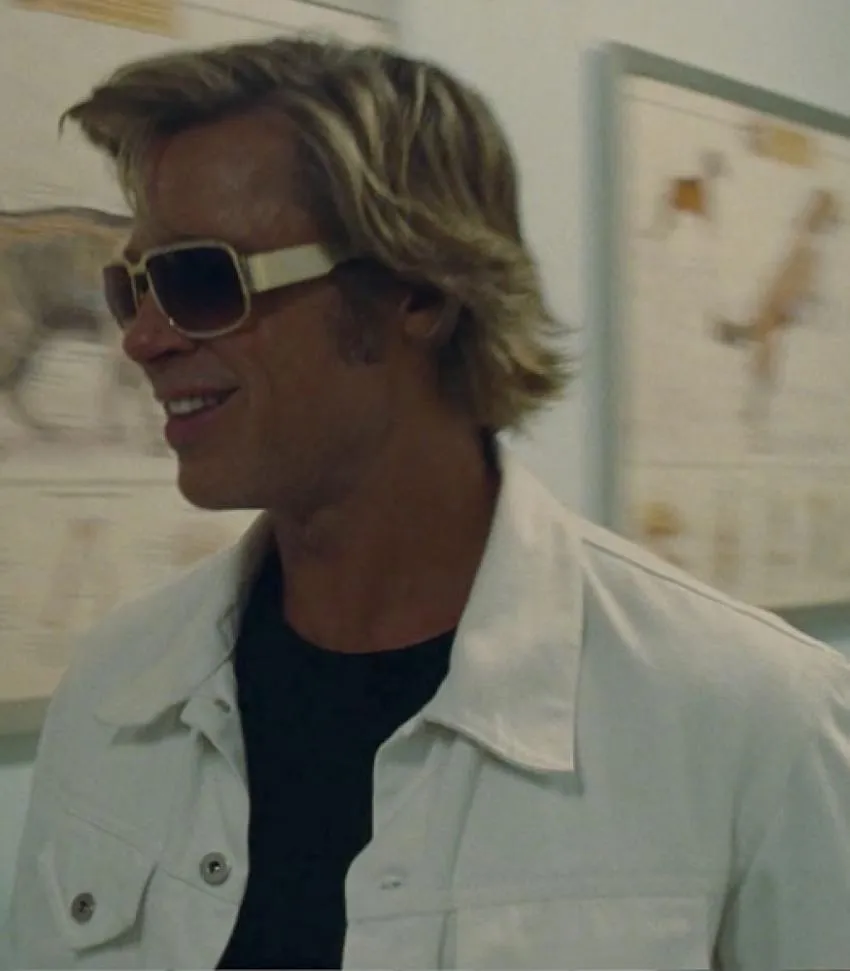
Brad Pitt as Cliff Booth
There is an actor who did win an Academy Award for his work on Once Upon a Time in Hollywood, and while it is for Best Supporting Actor, it was certainly well deserved. Brad Pitt won his very first Oscar with his performance as stuntman Cliff Booth, and his sidekick character was found endearing by fans around the world.
Although the film shows the stark differences between the two men, Dalton and Booth, there is a certain idea of a 'double' which rears its head multiple times in the film. On the opening credits, when the two are side by side in Rick's car, with Pitt behind the driver's wheel no less, their names are up there on the screen below the incorrect actor. If you pay attention, you will see DiCaprio's name under Pitt's face, and vice-versa.
Indeed, the film goes further into the dual relationship between the men, the contrast between their working situation, and their very serious friendship. Cliff is a man who would do anything for his pal, offering to psyche him up before he goes on set, holding him when he cries, and generally just being there for him when he is needed. In one of the more memorable scenes in the film, due to the former sexiest man in the world removing his shirt, Cliff fixes Rick's television antennae which have been blown off the roof in the night.
As Once Upon a Time in Hollywood, the book, reveals, Booth has a deep sense of reverence for comradeship and brotherhood. His service in World War II, both as an irregular fighter in the Japanese-occupied Philippines and as a formal enlisted man in Europe, has left deep scars on the stuntman. It is in this shirtless scene in which we see the literal wounds on Booth's chest. In the novel, many more details are given on the savage treatment of Booth's fellow soldiers if they were caught by the Japanese.
These atrocities against American soldiers are well-known amongst historians, but in an entertainment-based fiction novel, they come off as quite an interesting layer to the backstory of Booth. The controversial scene that everyone discusses, in which Booth may or may not kill his wife, has provoked much anxiety due to its possibly implied misogyny.
In the book, we are given the background into that death, and although we are here to say that Booth was culpable for the murder, we also must report that Tarantino implies that the amount of violence that Booth has endured in his life has given way to a vicious nature that otherwise would not have manifested itself.
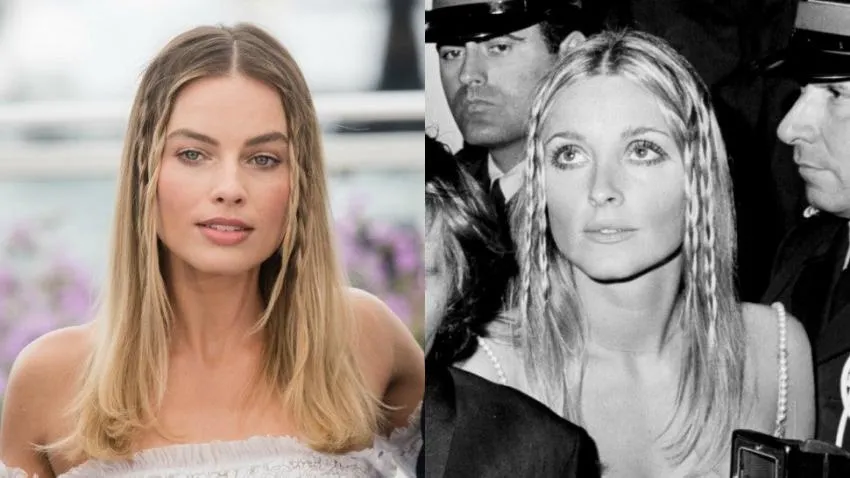
Margot Robbie as Sharon Tate
The Australian beauty and superb actress in her own right, Margot Robbie, was given a difficult assignment in this film. Not only did she have to channel a cherished Hollywood icon who was taken too soon, she also had to do it in a convincing and original way that would not besmirch the late actress Sharon Tate.
For a skilled performer like Robbie, this was a task she was ready to face head-on. Although she had few lines and even fewer plot points for her character to follow, Tarantino insisted that she was an integral part of the film. When asked about the purpose of including Sharon in this story, he said, "She was almost supposed to represent normalcy in the [film]. She doesn't have any plot to do, we're just watching her live her life because that's what was robbed from her, was living her life."
It was this mundane portrayal of the starlet's life that allowed her to become believable as Tate herself. We get to see what Sharon did on a normal day. The audience gets to be with her as she enjoys her first big taste of success when she goes to see herself in The Wrecking Crew. We ride shotgun as she plays the good samaritan to a hippie in need of a ride, which is perhaps an ironic circumstance.
The truth is, Sharon was very much a part of the hippie culture of the 1960s. Bold behavior for the times had her appear in Playboy with her husband Roman Polanski. The 60s showcased Tate as a sex symbol, though she really was a rather reserved beauty queen from Texas.
Margot has long been a sex icon, being especially well-known for her portrayal of Jordan Belfort's wife in Martin Scorsese's The Wolf of Wall Street. In yet another degree of commonality, this film had her star opposite Leonardo DiCaprio himself.
The fact is, Margot had little control over her character in this film as Tarantino had a very distinct idea of what he wanted her Tate to do. Margot did what he wanted, she showed up as the beautiful, breathless, and unattainable starlet that he knew Sharon was in her own time. In some ways, Robbie's Tate is an angel in the film, getting to live out her life in the fairytale of the movie when real life was much more tragic and sick.
Although Robbie has now worked with tons of big directors including Scorsese and Tarantino, she has also ascended to her own status of leading lady. When she reprised the role of Harley Quinn for Harley Quinn: Birds of Prey, she was met with critical acclaim and box office success.
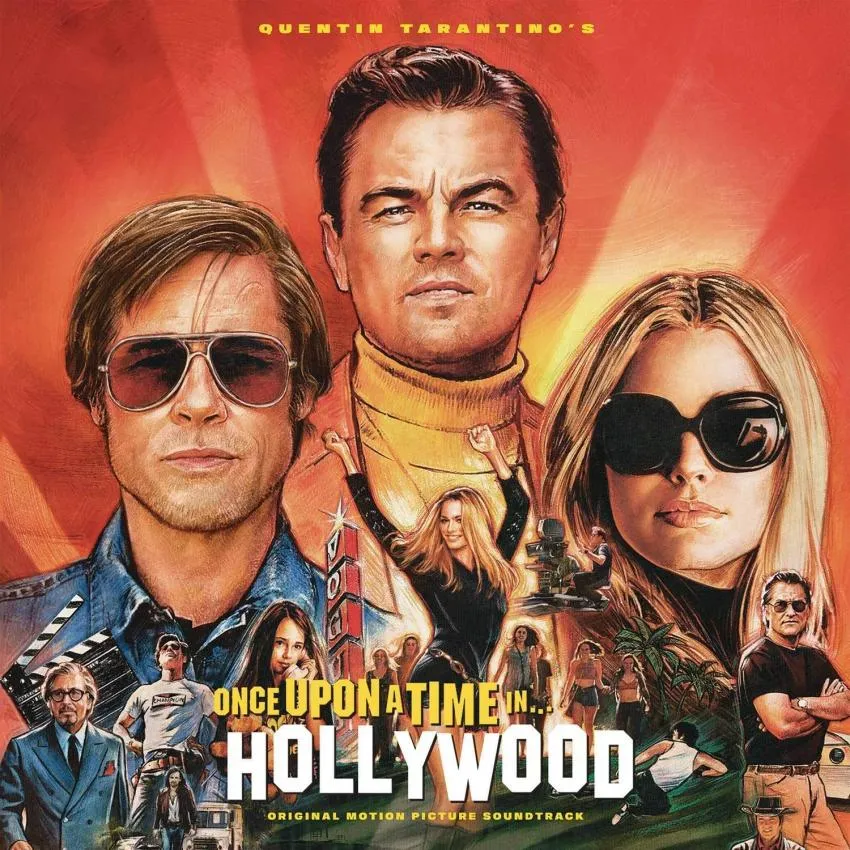
The Soundtrack of Once Upon a Time in Hollywood
The music in this film is a very important aspect which helps bring to life the decade that is perhaps best known by its sounds. However, Tarantino has made an interesting move here. Instead of including staples of the era, like The Beatles or The Doors, he has opted for a more pop-oriented soundtrack with hits that are edited to include real audio from the Los Angeles radio station, KHJ, which was famous in the 1960s.
He uses popular music of the time like Paul Revere & the Raiders to showcases Sharon's love for bubblegum music as well as her connection to Terry Melcher, a music producer who once agreed to record Charles Manson's musical demo. This is an ironic and realistic nod to the tragic relation that many Hollywood stars had to Manson's orbit and brings into question just how well-known Charlie was amongst stars of the day.
When he does include a bigger band from the era, like The Rolling Stones, he chooses a song that speaks about the end of an era in "Out of Time". The soundtrack is also chock full of commercials which would be consistent with the time period for the ultimate effect of feeling like you are listening to a real 1960s radio station.
Instead of including The Mamas and the Papas "California Dreamin'", he opts for famous Puerto Rican singer José Feliciano's rendition of the track. This reminds us of the influence of Latin culture on California, as well as the border it shares with Mexico. The names in the cities are all Spanish and so is the name of the state, so it is only fitting to include this version of the song as well. In times of fierce debate surrounding immigration, one can imagine this is Tarantino's way of giving his stamp of approval on the influence of Latin culture in America.
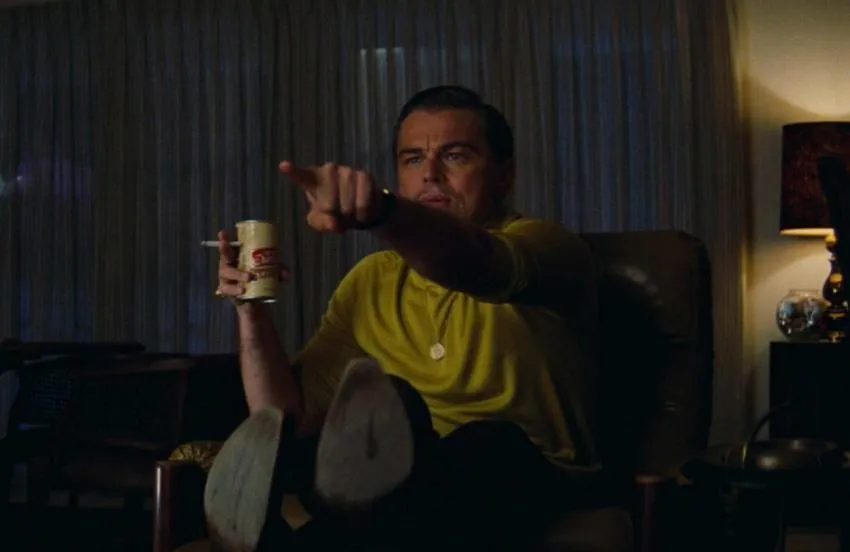
Quentin Tarantino at His Most Meta
It is fitting that the image of Rick Dalton pointing at himself on the television as he debuts his FBI performance has become such a popular meme in the last two years. The meme itself references a meta moment or a self-referential instance that allows the current story to comment on the conventions of its genre or its past. With that in mind, what do we mean when we say 'meta' as it relates to film?
Meta is an adjective for when a creative work refers to itself or comments on traditions of its genre or past works.
Quentin Tarantino is a director who loves to show off his prowess as a film buff. When he is able to use meta-references in his films, he does so with a flair for the zeitgeist of film culture. For instance, the Karmann Ghia that Cliff Booth drives is not only the same car from Kill Bill that Uma Thurman drove in her much-publicized accident, but it is also the car that the director's step-father drove him around Los Angeles in when he was a child in the 1960s.
Cliff Booth's entire opening wardrobe is lifted from Billy Jack, the 1971 film by Tom Laughlin. The backstory for the denim drabs is given in the novelization of the film. In fact, Rick Dalton's entire story kind of comments on something that Quentin Tarantino has been known to do. He often takes actors past their primes and makes them famous again.
Tarantino did this most effectively when he cast a down and out John Travolta in Pulp Fiction, and the same can be said for Bruce Willis in the same film. Even the way in which he wields Leo's mighty star power as Rick Dalton is itself a commentary on this practice and the fickle nature of Hollywood.
DiCaprio is still a star, but for anyone that thinks he's past his prime, here is Tarantino to show you just how good he still is. There is also a metatextual layer in the film which exists because of the actors who portray the characters and the characters themselves.
For instance, there is this idea of doubles throughout the film. Cliff is Rick's stunt double, a guy who looks after DiCaprio's character. We know Pitt as the older, more experienced actor, albeit only slightly. In this scenario, we as the audience can see the two realities coming together to give the film more meaning.
In our timeline, Pitt and DiCaprio are huge stars and buddies. in the film, Rick is a failing star like John Travolta in the early 1990s and Cliff is there to protect him from that fall the same way he protects him from the danger of doing any real stunts.
Pitt as Booth is perhaps one of the funnier choices. Pitt plays a basically unknown stuntman in this alternate timeline. However, in ours, he is one of the sexiest men alive and an absolute Hollywood megastar with the power to do or take anything he desires.
It is funny to contemplate Pitt in Booth's position, on the fringes of Hollywood, never making it to the top but also not desiring to do so. One must wonder what life would have been like if Brad Pitt had never become a famous Hollywood hunk.
Then there is Robbie's Sharon Tate watching herself at the movies. This is obviously a meta nod, but it is interesting to note here Tarantino's choice to leave Tate in the film footage. This is especially interesting when you consider how he has spliced Leonardo DiCaprio into famous films of the era. This shows us how Sharon lives on in the minds of fans of movies everywhere.
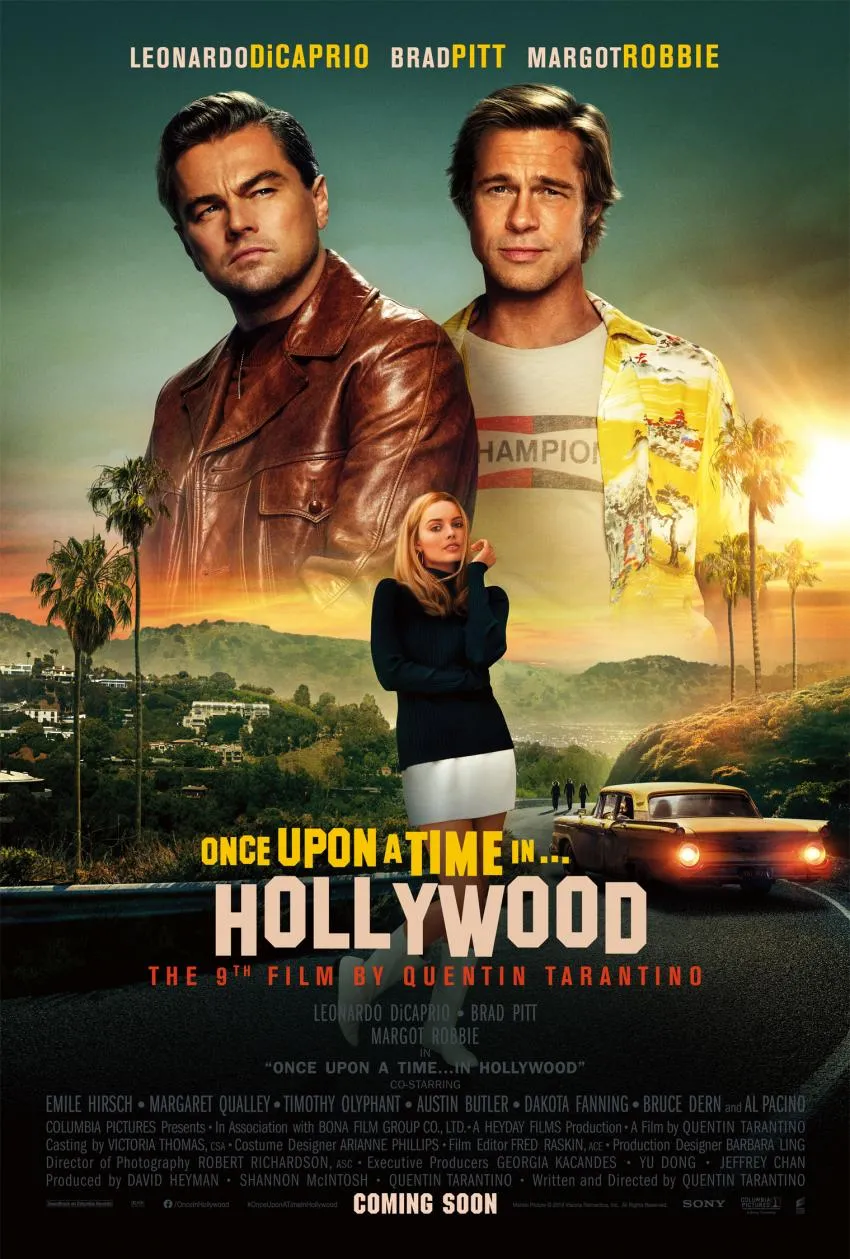
Easter Eggs in Once Upon a Time in Hollywood
In addition to these cultural commentaries, there are also tons of easter eggs throughout the film which give us a glimpse into the mind of Tarantino himself and the movies he has enjoyed. Tarantino chose to splice Leonardo DiCaprio into movies of the past, such as The Great Escape in an effort to combine the great films and actors of our two times. But wait, what is an easter egg you ask?
An easter egg is an inside joke or hidden message inside a form of visual media, such as a video game, a television show, or a feature film.
Though the movie itself contains probably hundreds of said easter eggs, there are some particular callbacks and references which stand out. The first one comes in the opening credits when the Columbia Pictures logo from 1969 is used. This allows us to settle into the time period Tarantino has chosen for the movie to live and breathe in. This is what we would have seen if we were watching an actual movie from 1969.
The Playboy Mansion party scene is full of easter eggs. For anyone who is familiar with the Laurel Canyon sound, you can see your favorite artists represented at the party. Cass Elliot of The Mamas and the Papas is at this party with her bandmate Michelle Phillips. Though Steve McQueen is there too, the inclusion of these characters is more than just a nod to the friendships Sharon kept.
Polanski infamously cheated on Sharon with her friend Michelle Phillips, and prior to dating Polanski, Sharon had a relationship with Steve McQueen. In addition, the inclusion of Jay Sebring at the party and the expository done by Damian Lewis' McQueen explains the tangled web of love triangles and free love that was all the rage during the late 1960s.
One of the most interesting contextual commentaries made in the film is the depicted treatment of child actors. When Julia Butters' character is taken hostage by Rick Dalton in the Lancer pilot, he holds a gun to her head and throws her to the ground with a hard pitch. This kind of violence against children would never have aired on American television of the time, so it likely exists here as a commentary on the abuse that child stars go through. Most child stars have trouble even making it to adulthood, let alone living a normal life when they get there.
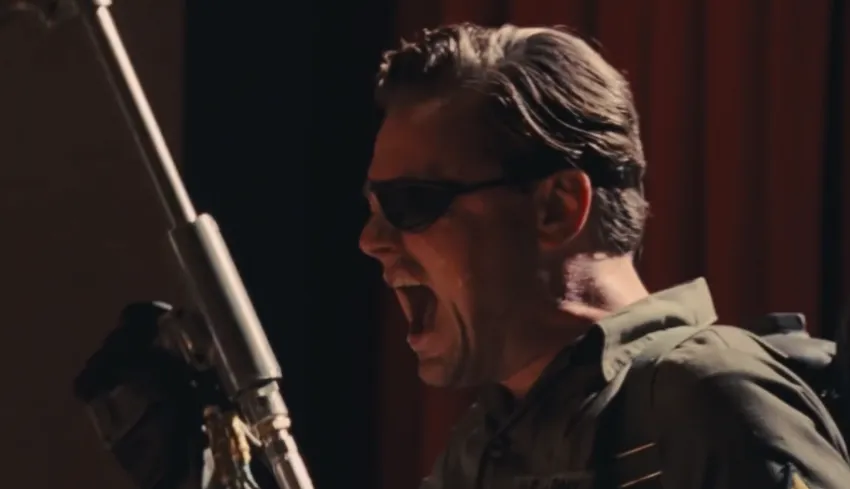
The flamethrower scene from The Fourteen Fists of McCluskey is a clear nod to the brutal finale of Tarantino's own World War II film, Inglorious Basterds, though this time, Leo plays the lead. This scene is also foreshadowing for the finale of Once Upon a Time in Hollywood as well, as this weapon will be the very one that ends the hippie era once and for all.
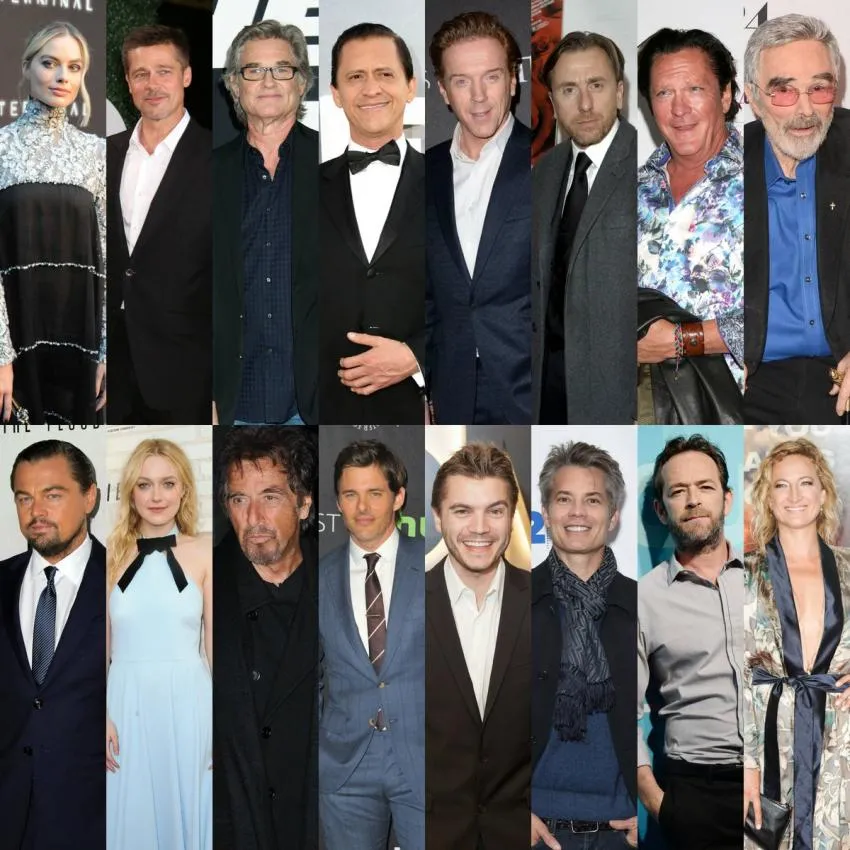
The Cast of Once Upon a Time in Hollywood
The cast of Once Upon a Time in Hollywood is about as star-studded and packed to the brim with famous actors as any film is able to be. With acting greats like DiCaprio, Pitt, and Al Pacino himself, the story's setting is a nod to the film's own recognition of its amazing cast.
Although the main characters are played by perhaps the two biggest stars of their time, the Manson family also boasts some impressive performers. Dakota Fanning, who has been a star since childhood, gives a great turn as "Squeaky" Fromme. Margaret Qualley, of The Leftovers fame, has a standout role alongside Brad Pitt as Pussycat, a local runaway, and hippie loyal to Charles Manson. Manson himself is played by the consummate actor Damon Herriman, who actually played Manson in both this and Netflix's Mindhunter.
Casting is always an important part of the movie-making process, and this group of actors hits a home-run in their efforts to bring the Hollywood of the free love era to life.
Below we have listed the actors included in the film, Once Upon a Time in Hollywood:
- Leonardo DiCaprio as Rick Dalton
- Brad Pitt as Cliff Booth
- Margot Robbie as Sharon Tate
- Emile Hirsch as Jay Sebring
- Margaret Qualley as "Pussycat"
- Timothy Olyphant as James Stacy
- Julia Butters as Trudi Frazer
- Austin Butler as "Tex"
- Dakota Fanning as "Squeaky"
- Bruce Dern as George Spahn
- Mike Moh as Bruce Lee
- Luke Perry as Wayne Maunder
- Damian Lewis as Steve McQueen
- Al Pacino as Marvin Schwarz
- Nicholas Hammond as Sam Wanamaker
- Samantha Robinson as Abigail Folger
- Rafał Zawierucha as Roman Polanski
- Lorenza Izzo as Francesca Capucci
- Costa Ronin as Wojciech Frykowski
- Damon Herriman as Charlie
- Lena Dunham as "Gypsy"
- Madisen Beaty as "Katie"
- Mikey Madison as "Sadie"
- James Landry Hébert as "Clem"
- Maya Hawke as "Flowerchild"
- Victoria Pedretti as "Lulu"
- Sydney Sweeney as "Snake"
- Kansas Bowling as "Blue"
- Danielle Harris as "Angel"
- Harley Quinn Smith as "Froggie"
- Rumer Willis as Joanna Pettet
- Dreama Walker as Connie Stevens
- Rachel Redleaf as Mama Cass
- Rebecca Gayheart as Billie Booth
- Rebecca Rittenhouse as Michelle Phillips
- Scoot McNairy as Business Bob Gilbert
- Kurt Russell as Randy Lloyd and the Narrator
- Zoë Bell as Janet Lloyd
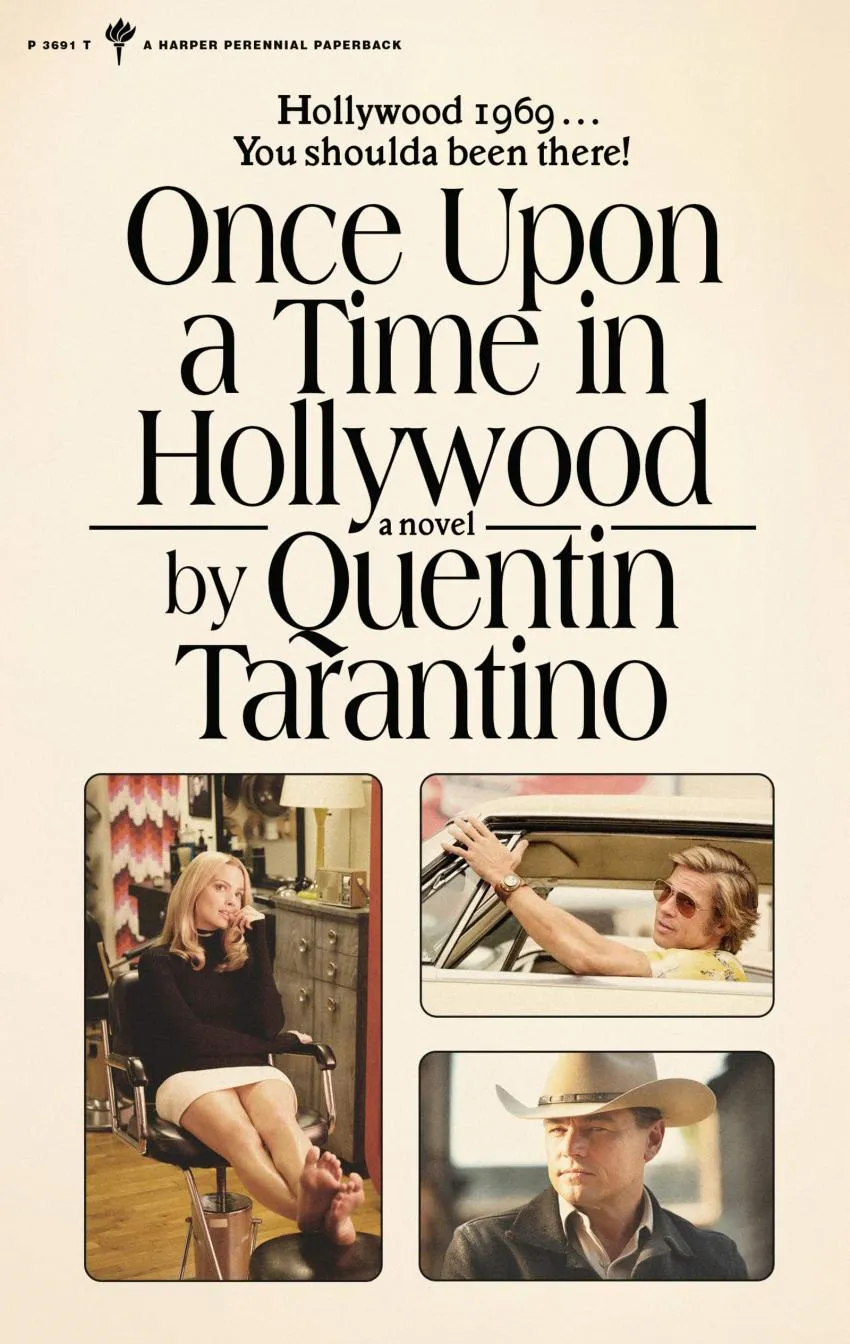
The Novelization of Once Upon a Time in Hollywood
On June 29th, 2021, Quentin Tarantino released his first novel, the book version of his most recent film, Once Upon a Time in Hollywood. The book is about 400 pages and provides additional backstory and character information not shown in the film.
For those unfamiliar with books that are based on films, they were popular pulp fiction reading of the time and could be found at local gas stations or liquor stores next to the romance novels. With this in mind, Tarantino got Harper Perennial to agree to release the paperback first, as it would have been done in the 1960s. At the back of the book, there are advertisements for films and novelizations of the time such as Serpico.
Novelizations are largely a thing of the past, and these days it is much more common for a film to be based on a book and not the other way around. So what exactly is a novelization?
A novelization is a novel derived from another medium such as a film. It seeks to adapt the story into book form, while adding or omitting certain aspects.
As such, lovers of this film will love this book as well. It gives you that extra insight into the backstory of the characters in Hollywood trying to survive in that counterculture era. Critics of the film who claimed characters like Tate and Manson did not get enough screen time will be pleased to see these characters thoroughly fleshed out with detailed backstories and flashbacks.
Many questions from the film are answered in the book as well, such as whether or not Cliff Booth killed his wife. If you are a fan of the film, you owe it to yourself to give the book a shot. It is not your typical dry novelization made for pure profit. It was a labor of love for Tarantino, a man who plans to someday release his almost four-hour cut of the film. In addition to that, Quentin Tarantino is also writing a stage play of Once Upon a Time in Hollywood and producing a Bounty Law series as well.
This is a movie-lovers movie cast against the bittersweet backdrop of a buddy comedy that we never want to end. The book will give you all the extra insight you could want into the world of Once Upon a Time in Hollywood. If you are a fan, we suggest picking it up right away as it continues to sell out everywhere.
Opinions and Perspectives
The way they balanced the lighter moments with the underlying tension was masterful.
Every rewatch reveals new details. The level of world-building is just incredible.
I loved how they recreated old TV shows. Those sequences felt completely authentic to the period.
The film's commentary on fame and aging in Hollywood feels even more relevant today.
After reading the novel I realized how much depth there was to Cliff's character that we didn't see on screen.
The way they handled the ending was controversial but I found it really satisfying.
Even the small roles were perfectly cast. Everyone felt like they belonged in that era.
The attention to period-accurate details in the background was incredible. Every street scene felt alive.
I think this film will age really well. It captures a specific moment in time perfectly.
DiCaprio's breakdown scene in the trailer showed such vulnerability. Really powerful stuff.
The subtle ways they showed Hollywood changing were brilliant. Like the hippies taking over the streets.
That shot of Cliff driving through LA at night is pure cinema. Captures the whole vibe of the era.
The way they handled violence in this film felt different from Tarantino's other works. More purposeful somehow.
Reading the novel actually made me appreciate the film even more. There's so much backstory we didn't see.
The scene transitions using radio broadcasts were such a smart way to set the mood.
I've watched tons of 60s films and they really nailed the look and feel of that era's filmmaking.
Kurt Russell's narration was perfect. Added just the right amount of context without overdoing it.
The way they used actual locations from the period really added to the authenticity.
I found myself really invested in Rick's comeback story. Those small victories meant so much.
The parallel between Rick's career decline and the end of that Hollywood era was really clever.
You make a good point about going in blind. My friend knew nothing about Sharon Tate and had a completely different experience watching it.
Does anyone else think the film works better if you don't know the real history going in?
I appreciated how they showed the less glamorous side of acting. Those TV western scenes were so authentic.
Looking at it now, it feels like Tarantino's love letter to a Hollywood that doesn't exist anymore.
That scene where Cliff feeds his dog is so simple but tells us so much about his character.
The way they handled the Manson family was really interesting. Creepy without making them the main focus.
I think people miss how much this film is about friendship at its core. Everything else is just window dressing.
Margaret Qualley's performance as Pussycat was really underrated. She captured that lost soul quality perfectly.
The party at the Playboy Mansion was such a perfect snapshot of that era's excess and glamour.
I love how the film showed the friendship between actor and stuntman. We rarely see those relationships depicted.
That flamethrower scene at the end was pure Tarantino. Somehow both shocking and satisfying at the same time.
Every time I watch it I notice new background details. The production design team really outdid themselves.
The film's commentary on aging in Hollywood still feels relevant today. Things haven't changed as much as we might think.
I've lived through that era and I have to say, they really captured the feeling of uncertainty and change in the air.
The way they recreated old TV shows within the movie was so well done. Those western scenes felt completely authentic.
Just finished the novel and wow, it adds so much depth to these characters. Especially Rick's mental health struggles.
The sequence of Sharon Tate going about her day really humanized her. It wasn't about her tragedy, but her life.
Brad Pitt definitely deserved that Oscar. Cliff Booth is such a complex character under that cool exterior.
I think the film works even better if you don't know the real history. The tension builds differently.
The fact that Margot Robbie studied Sharon Tate's actual movements and mannerisms shows such dedication to the role.
Anyone else catch all the references to other Tarantino films? I loved how he connected it to his larger universe.
The costume design deserved more recognition. Every outfit felt authentic to the period without looking like costume party clothes.
I actually found the Spahn Ranch sequence incredibly tense. The whole atmosphere just felt off in the best possible way.
Al Pacino's character added such a great perspective on the changing Hollywood system. His scenes with Leo were fantastic.
I've watched it three times and keep noticing new details and references. It's definitely a film that rewards multiple viewings.
The way Tarantino wove real Hollywood history with fiction was masterful. You sometimes forgot what was real and what wasn't.
Julia Butters really held her own against DiCaprio in their scenes together. That kid has a bright future ahead.
I disagree about the Bruce Lee scene. I saw it as more of a memory from Cliff's perspective, possibly exaggerated like many of his recollections.
Can we talk about that Bruce Lee scene? I found it pretty controversial and somewhat disrespectful to his legacy.
The attention to detail in recreating old Hollywood locations was incredible. I've lived in LA my whole life and it felt like stepping back in time.
I personally think this is Tarantino's most mature film. It shows his growth as a filmmaker while keeping his signature style.
The soundtrack choice was brilliant. Using actual KHJ radio recordings made it feel so authentic to the period.
Leo's portrayal of Rick Dalton's insecurities and struggles was incredibly raw. That trailer scene where he breaks down really got to me.
Has anyone read the novelization? I'm curious how it expands on Cliff's backstory, especially regarding his wife.
I really appreciated how the film showed both the glamorous and darker sides of Hollywood. It wasn't just nostalgia, but a complex look at that era.
The scene where Sharon watches herself in The Wrecking Crew honestly brought tears to my eyes. Such a touching moment showing her joy and innocence.
Margot Robbie captured Sharon Tate's essence beautifully. I know some complained about her limited dialogue, but her presence was so important to the story.
You're right about the pacing. But I think that was intentional to really immerse us in that time period. The slow burn made the ending even more impactful.
I actually found the pacing a bit slow in parts. While I appreciate the attention to detail, I felt some scenes could have been trimmed down.
The film's alternate history ending was genius in my opinion. While some might disagree, I found it cathartic and a fitting tribute to Sharon Tate's memory.
Brad Pitt and Leo had amazing chemistry together. Their friendship felt so genuine and natural on screen. I think that's what made the movie work so well for me.
I absolutely loved how Tarantino recreated 1969 Hollywood with such incredible detail. The cars, fashion, and music really transported me back in time. You could tell this was a passion project for him.
